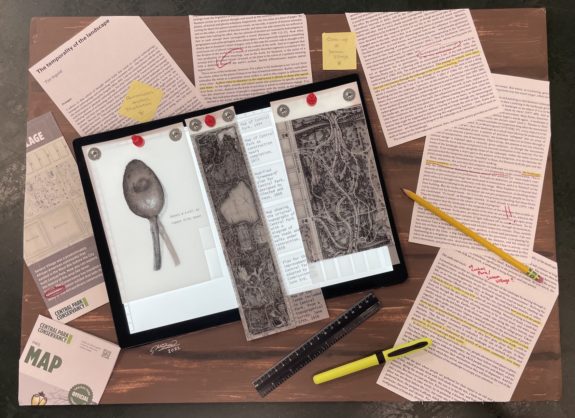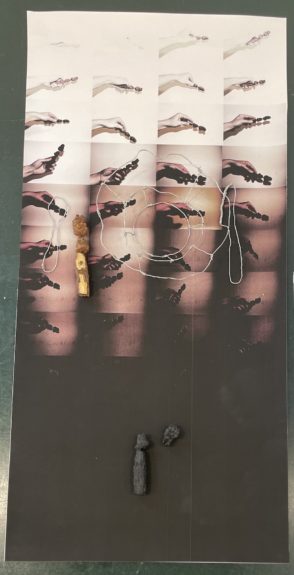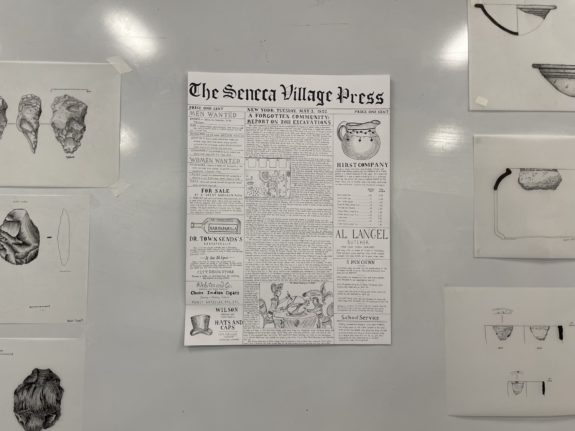Staff Writer Sydney Wells attended Art & Science in Archaeological Illustration, an exhibit and reception this Tuesday in Schermerhorn Hall.
The hallway outside of 467 Schermerhorn was busy with people this Tuesday, observing the pieces that spilled out of the classroom. Sketches, paintings, and prints laid on bulletin boards and stood on easels, offering a taste of the rest of the artwork featured in the exhibit: Art & Science in Archaeological Illustration. Inside the classroom, students excitedly showed and explained their pieces.
In the center of the room was a piece by Miriam Fried, an intricate piece that explores the planning and construction of Central Park. Using drafting film, she layered different maps of the park over time, starting with a topographical survey from 1856 and ending with a map of the completed park in 1994. Fried also included a close-up map of Seneca Village and a multi-layer depiction of a spoon found there.

Many of the pieces in the exhibit related to Seneca Village, a predominantly African-American community that existed between 1825 and 1857. This community made up part of the land that New York City chose to become Central Park; the city used eminent domain to acquire the land, underpaying inhabitants for their property and forcibly removing them from the location. Artifacts and remnants from what was once Seneca Village inspired much of the art in this exhibit.
At the back of the room was a multimedia project by Victoria Reshetnikov, centered around an eating utensil excavated from the Seneca Village Repository. The project included a 3D printed version of the utensil depicted in different contexts: used in an eating ritual, placed with a dining set, laid against a black backdrop. With these contexts, Reshetnikov explores the ritualistic, functional, and obscure facets of the utensil.

Situated between line-drawings of stone tools and interpretations of ancient pottery shards was a piece by Stephanie Chen, a handwritten imagination of a Seneca Village newspaper. The hypothetical Seneca Village Press included advertisements for sarsaparilla and cigars, a political cartoon depicting the acquirement of Seneca Village by New York City and its parks committee, and a description of the 2011 archaeological investigation of Seneca Village. The piece blended illustration and historical detail to create what felt like a real, historically accurate newspaper.

This exhibit showcased the truly impressive talents of archaeology students here at Columbia, as well as the overlap between science and art in the field of archaeology as a whole. The focus on Seneca Village made the pieces feel cohesive and relevant to our lives as New Yorkers, and I look forward to seeing what the department has to show next semester!
Images via Sydney Wells


 0 Comments
0 Comments